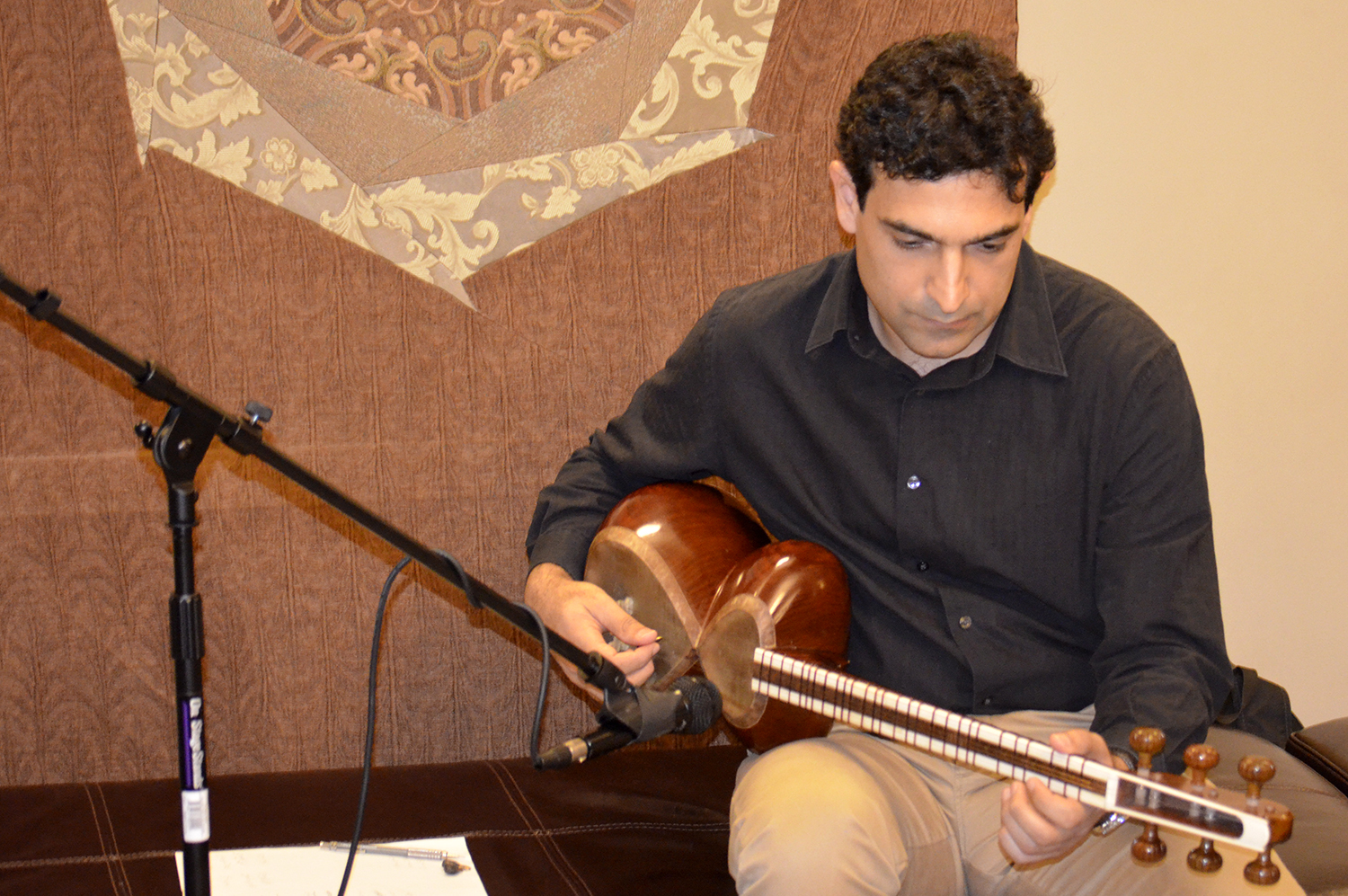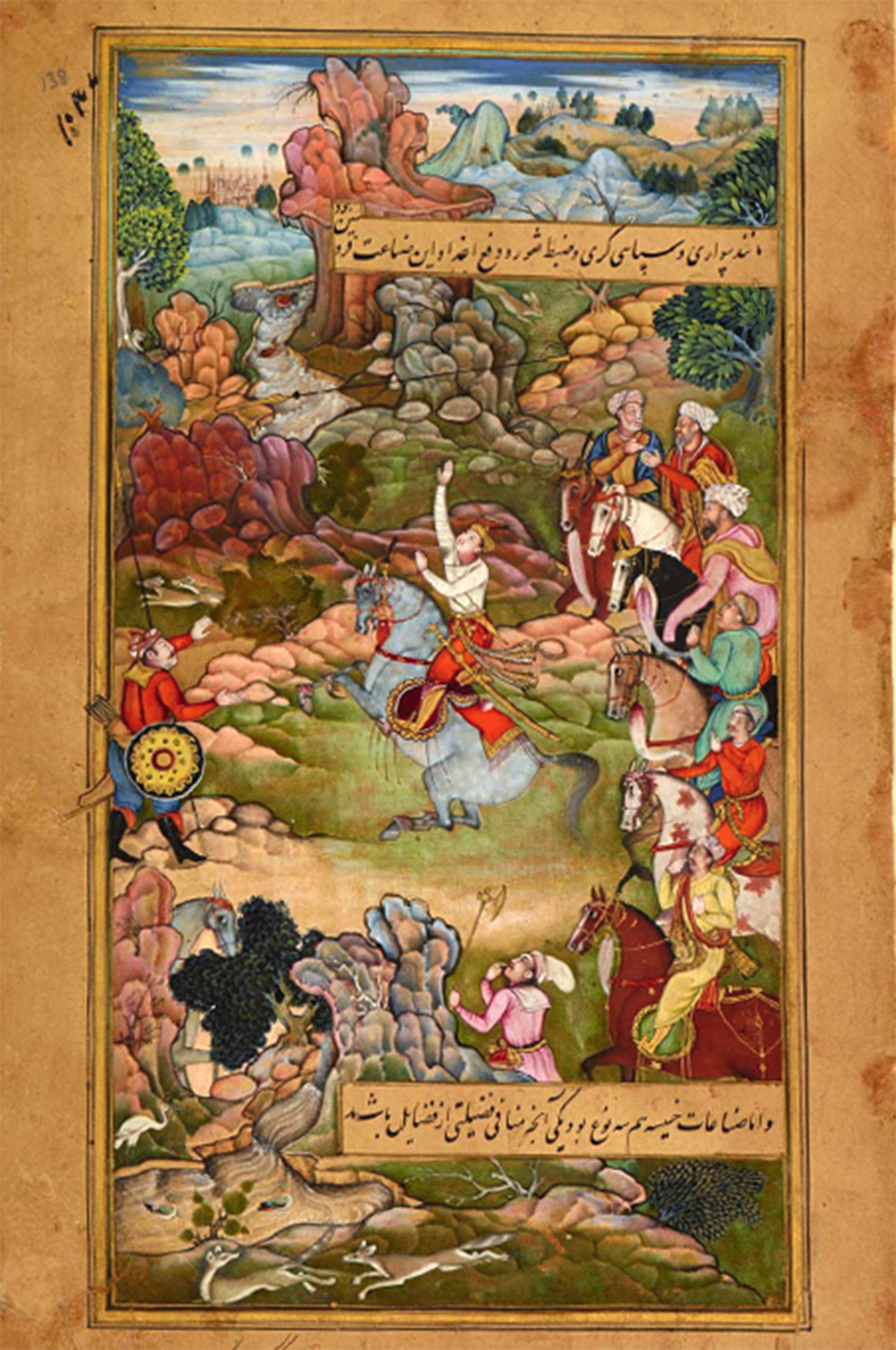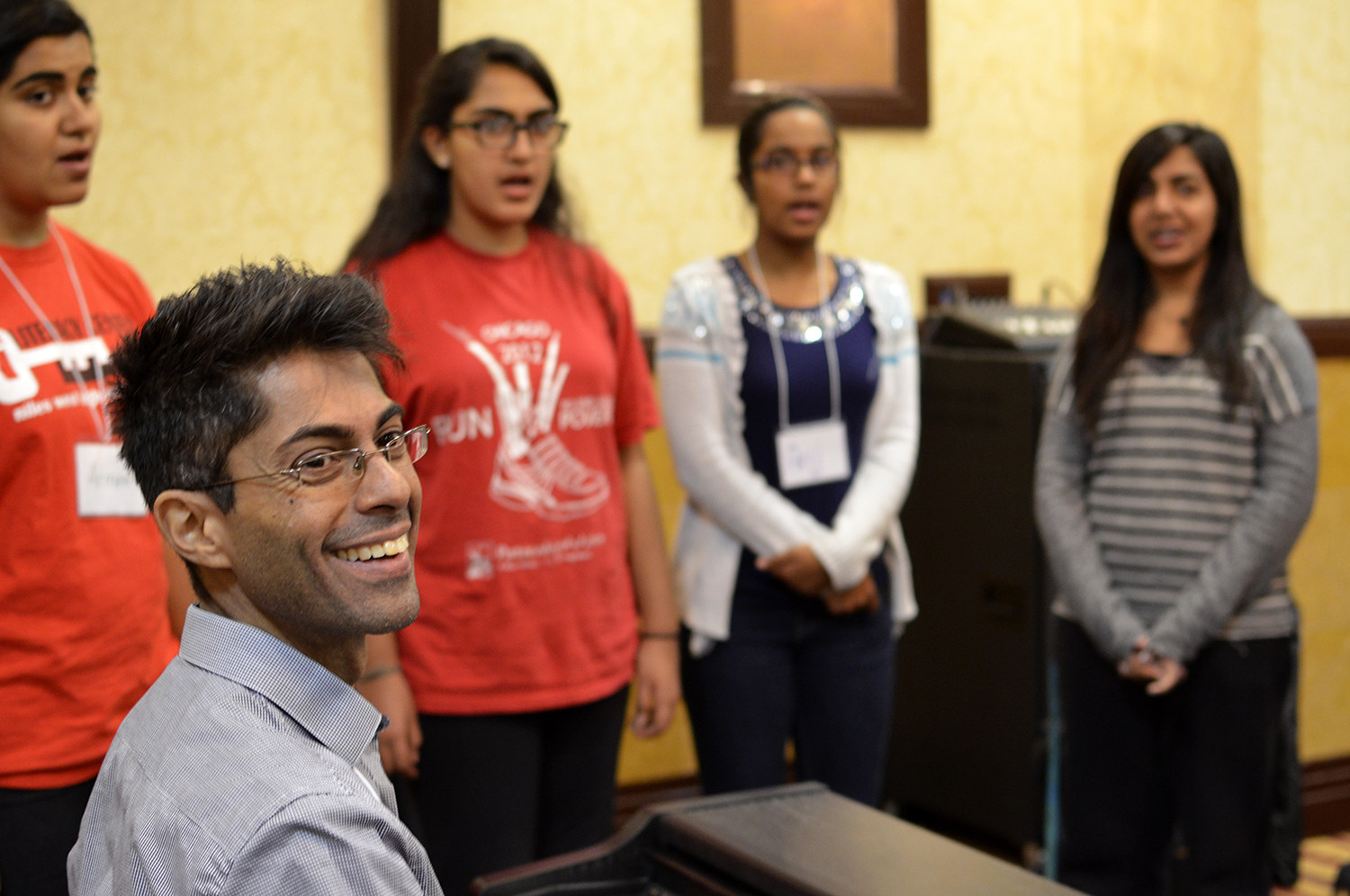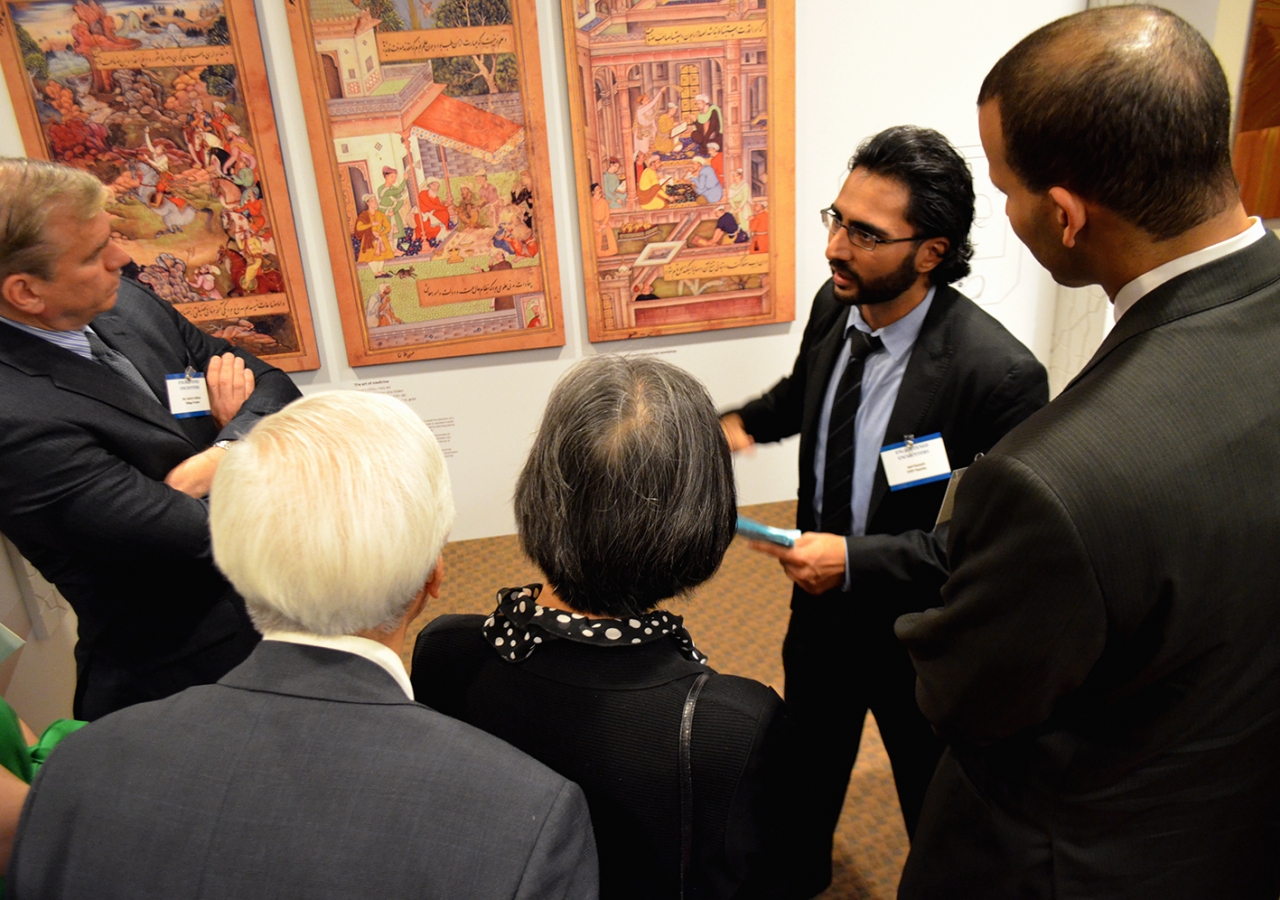Look to Enlightened Encounters to connect the dots. This new initiative of the forthcoming Aga Khan Museum, had its debut in the Chicago area earlier this month.
To be situated in Toronto and scheduled to open in the summer of 2014, the Aga Khan Museum has embarked on a tour to introduce itself in major American centres. Unusual as it may be for a new museum to reach out to an audience so far away from where it is situated, reaching farther afield is part of the Museum's mandate.
“Enlightened Encounters is the inaugural event for the Aga Khan Museum in the United States,” says the Museum's Director, Henry Kim. “One of our challenges is that we have been tasked with the prerogative to make this museum more than a museum of the city of Toronto, but to make it a museum of Canada, of North America, and perhaps even broadly of the world.”
Through the sharing of knowledge, the Museum endeavours to connect communities across time, cultures and lands. It promises to bring enduring teachings of the past into the present and demonstrate that, despite being separated by centuries of history, they remain relevant to us today.
Connecting communities
 A musician plays the rubab at the Enlightened Encounters outreach event held at Chicago Headquarters Jamatkhana in Glenview, IL. Courtesy of the Enlightened Encounters team
A musician plays the rubab at the Enlightened Encounters outreach event held at Chicago Headquarters Jamatkhana in Glenview, IL. Courtesy of the Enlightened Encounters teamSuch aspirations may sound rather lofty, but the Museum will be the first in North America dedicated to the Islamic Arts, and seeks to be a place where art, education and performance converge. Nor will it limit itself to artwork, performances and education programmes; according to Kim, “it is truly a Museum that is meant to connect communities.”
Indeed, the theme of “connecting communities” features strongly in the Enlightened Encounters exhibition, in which the audience is invited to learn about a 16th century Indian manuscript of Nasir's Ethics – an object in the Museum's collection. The text, which was written by the great 13th century Persian scholar Nasir al-Din Tusi, ponders matters such as how people of different traditions and beliefs can share their cultures with one another. How can one generation in history speak to another, even if separated by long gaps in time and profound differences?
These questions are as vitally important today as they were in the past, suggests the Museum. They address concepts ranging from justice and love, to ideas about educating children and good government.
Nasir's Ethics
A philosopher, astronomer, mathematician, geographer, and theologian, Nasir al-Din Tusi is reputed to be one of the greatest scholars of the classical Islamic age. His work on Nasir's Ethics drew inspiration from, amongst others, the ancient Greek philosopher Plato. In 16th century India, under the patronage of the great Mughal Emperor Akbar, calligraphers and artists reproduced Nasir's Ethics creating a work of practical philosophy illustrated with thematic paintings.
“The Aga Khan Museum's manuscript is the copy which was produced in Akbar's court and is the only known version of Nasir's Ethics that has ever been illustrated,” notes Heather Ecker, Head of Curatorial Affairs at the Museum. “Illustration in a work on ethics makes this manuscript rare for its time.”
 A folio of Nasir's Ethics from the Aga Khan Museum collection. Northern India, about 1590–95 CE. Copyright: Aga Khan Museum, 2013
A folio of Nasir's Ethics from the Aga Khan Museum collection. Northern India, about 1590–95 CE. Copyright: Aga Khan Museum, 2013Persian paintings are mainly found in epic tales and poems, but Nasir's Ethics is neither. Rather, it is an ethical manual with a series of examples chosen by Tusi to demonstrate his precepts for correct behaviour. The artists of Emperor Akbar's court illustrated a selection of concepts from amongst the abstract ideas of Tusi's manual, and surrounded them with lively scenes. These paintings are not only unique in the history of book illustration, but they also represent a merging of ideas from Tusi's historical time in Iran with the painters' perceptions of their own contemporary Indian society of the late 16th century.
“These paintings are very complex and can be read on many levels,” points out Patricia Bentley, the Museum's Education Manager. “There is an obvious level, and a deeper level, of meaning.”
A scene in one of the paintings features a young Mughal prince showing his peers that he can skilfully control a powerful horse and manage his accoutrements at the same time, including a lance, a crop, and a golden sword. At the top right, three older men on horseback representing the ministers of state – a noble profession – watch his progress. At the lower right, peers of the prince observe his skill, knowing they too will soon need to demonstrate their abilities.
“The deeper level of meaning here is the message for today's youth,” Bentley explains. Not only is it important to cultivate inner virtue – being a good human being within one's society, as Tusi would advise – but it is also vital to develop courage to undertake challenges. Each person learns how to be brave from their parents, teachers and peers, and becomes more skilled at facing difficulties. This can be seen as a modern form of chivalry, which also includes being just towards everyone and protecting those who cannot protect themselves.
If paintings could sing
 Hussein Janmohamed prepares the youth ahead of a performance during the launch of Enlightened Encounters in Chicago. Courtesy of the Enlightened Encounters team
Hussein Janmohamed prepares the youth ahead of a performance during the launch of Enlightened Encounters in Chicago. Courtesy of the Enlightened Encounters teamWhile the obvious aspects of the paintings can be perceived with the eye and a deeper level can be considered with help from the museum's educational components, a third dimension is to be experienced through performance.
If the paintings could sing, asks Hussein Janmohamed, what would they sound like?
Janmohamed, a choral director, led a group of Chicago-area youth in choir performances during the launch of Enlightened Encounters, in which they subtly hummed the “sounds” of the paintings. With less than a week to prepare and perform, the local youth gained valuable skills and confidence.
The interactive sessions evoked a synthesis of melodies drawn by the audience from various faith traditions. While each traditional tune had its own identity and was individually pleasant, when brought together in harmony they created something greater and more beautiful.
Janmohamed is now set to depart Chicago and travel with Enlightened Encounters to Texas, where it will visit Dallas for the month of November, before moving on to Houston from 6–29 December.
With its displays of painting reproductions, tools used by artists, hands-on digital tablets, enlightening lectures, interactive musical programmes, and educational workshops, Enlightened Encounters is not only a “must see”, but also a “must hear, think, feel, and do.”








